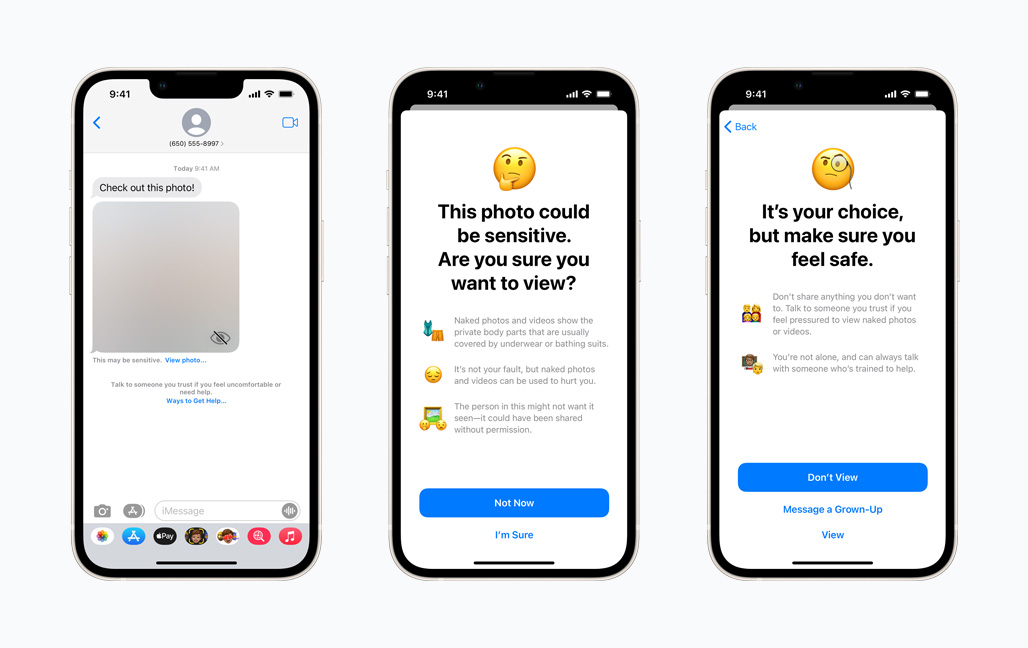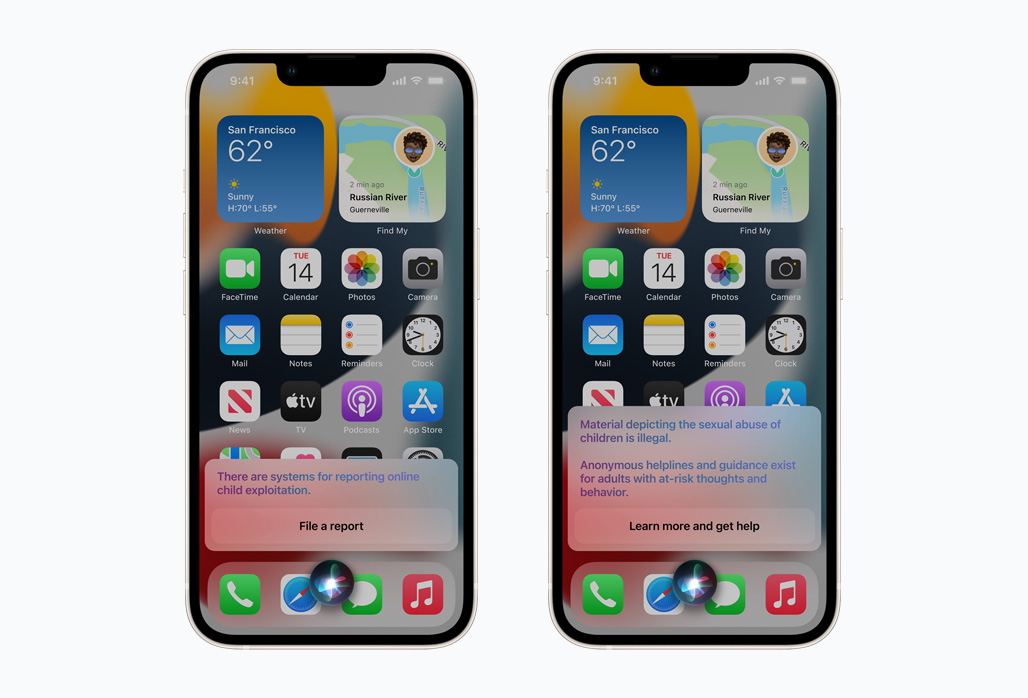Children will be warned when they receive or attempt to send images or videos containing nudity in Messages, AirDrop, Contact Posters in the Phone app, FaceTime video messages and the system Photos picker. Communication Safety is enabled by default for children and can be adjusted by the parent in Settings > Screen Time > Communication Safety.
When receiving this type of content, the photo or video will be blurred, and the child will be warned, presented with helpful resources and reassured it is okay if they do not want to view the photo or video. Similar protections are available if a child attempts to send photos or videos that contain nudity. In both cases, children are given the option to message someone they trust for help if they choose.
Starting in iOS 18, iPadOS 18 and macOS Sequoia, Communication Safety will require that the Screen Time passcode for the Family Sharing group is entered on the chid’s device in order to view or send a sensitive image. Communication Safety will not proactively notify the Family organiser that a child attempted to view or send a sensitive image, but it will require that the Family organiser enter the Screen Time passcode on the child’s device.
The operating system analyses image and video attachments, and determines if the content contains nudity without sending information off the device. The feature is designed so that no indication of the detection of nudity leaves the device. Apple does not get access to the messages, and no notifications are sent to the parent or anyone else.
The Sensitive Content Analysis framework enables third-party developers to integrate Communication Safety in their apps. The framework allows developers to detect if content that children receive or attempt to send in their apps may contain nudity, and developers can add protections in their apps when sensitive content is detected.
This feature requires that both the parent and child are part of a family group in iCloud. Learn more about how to set up Family Sharing here.

